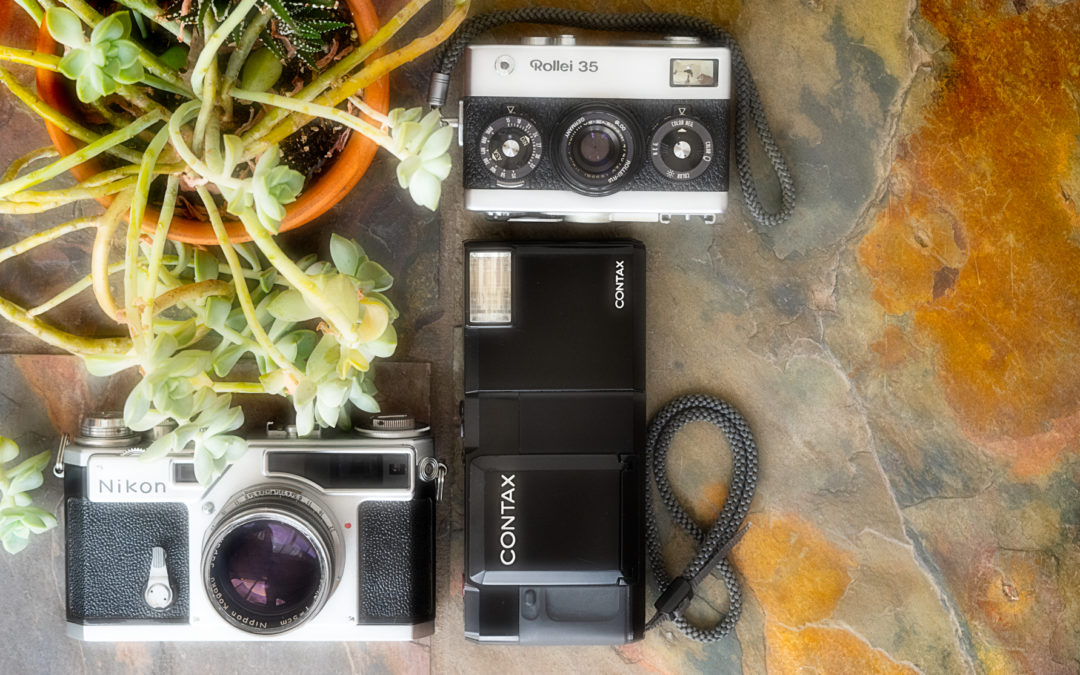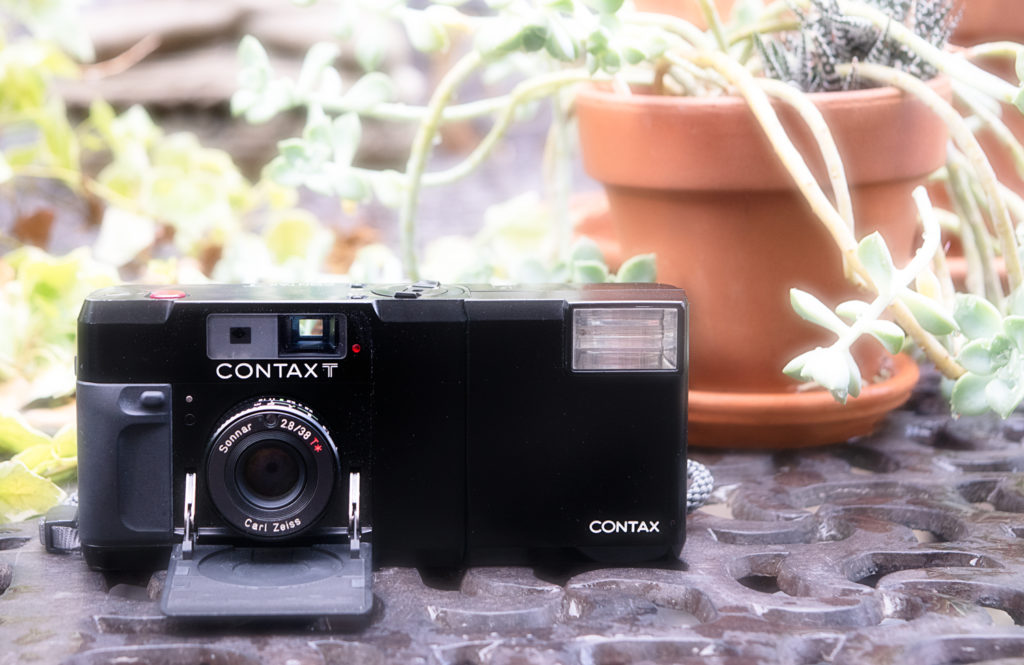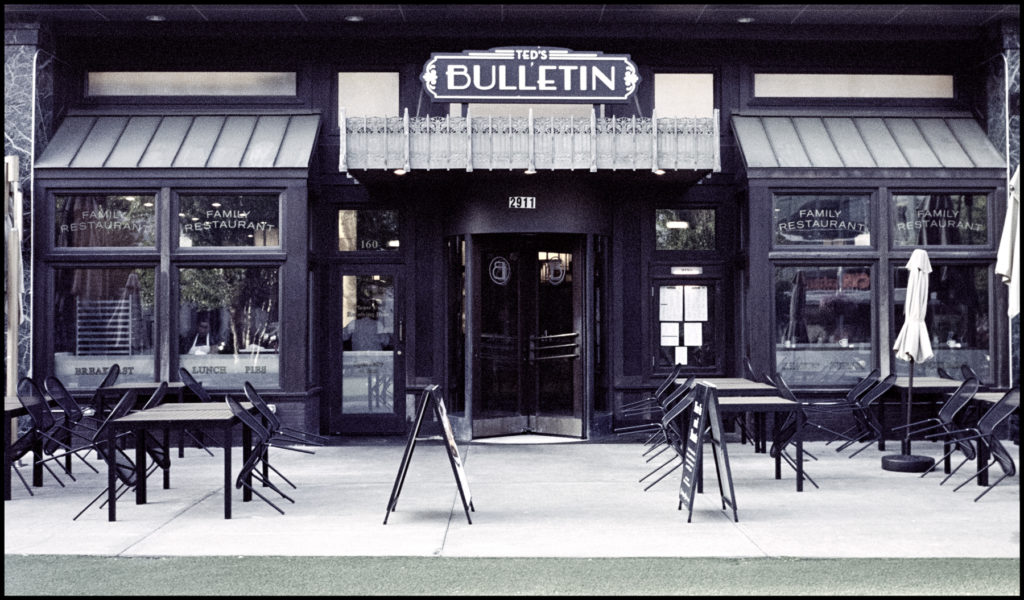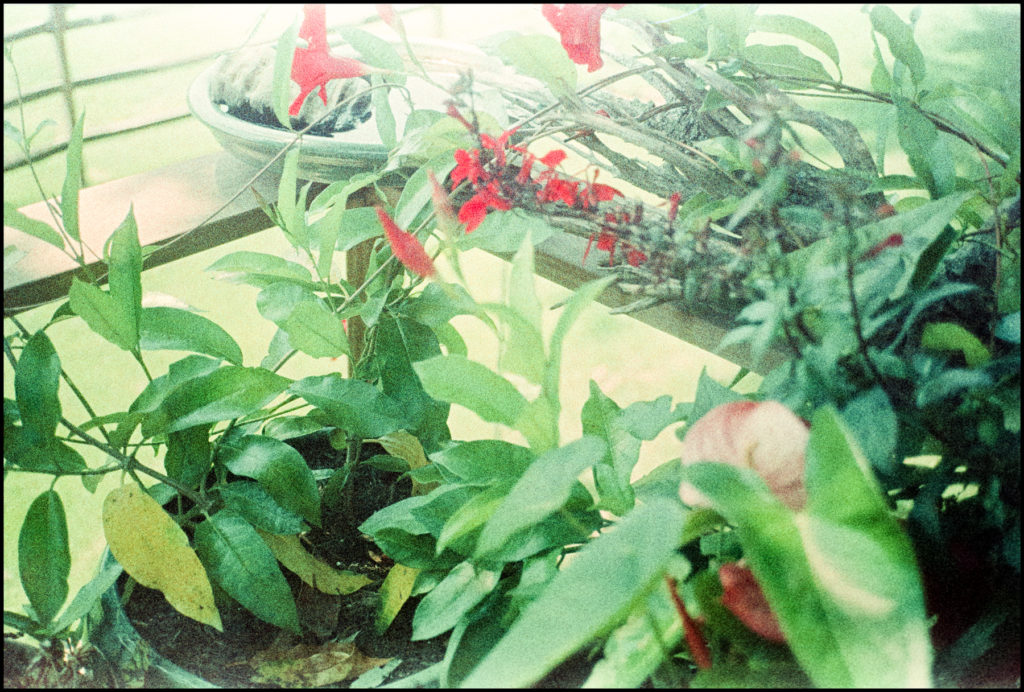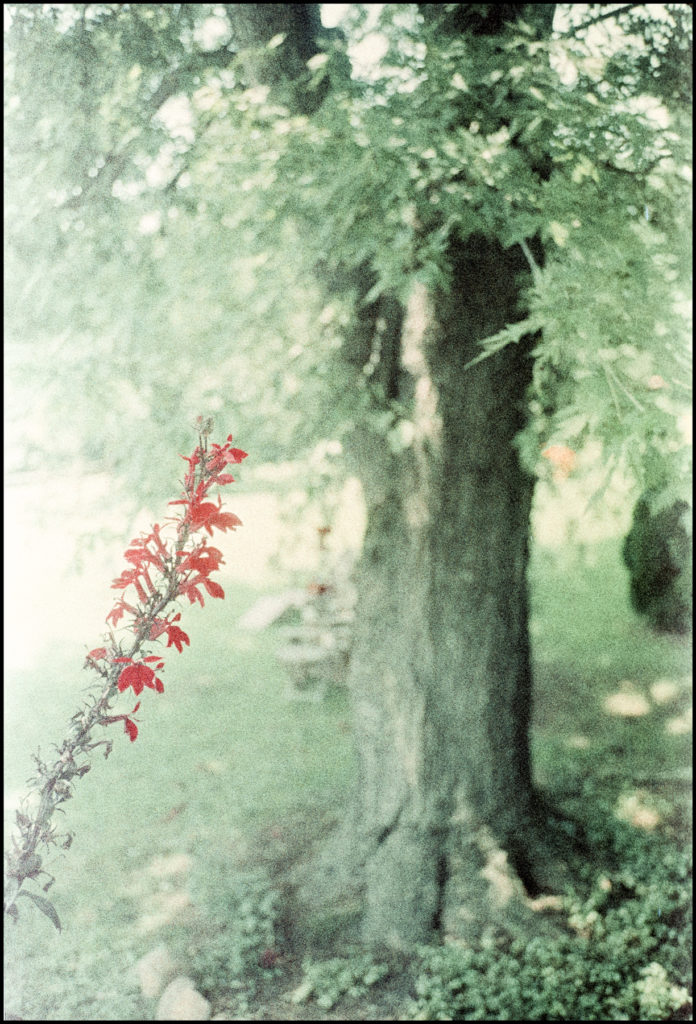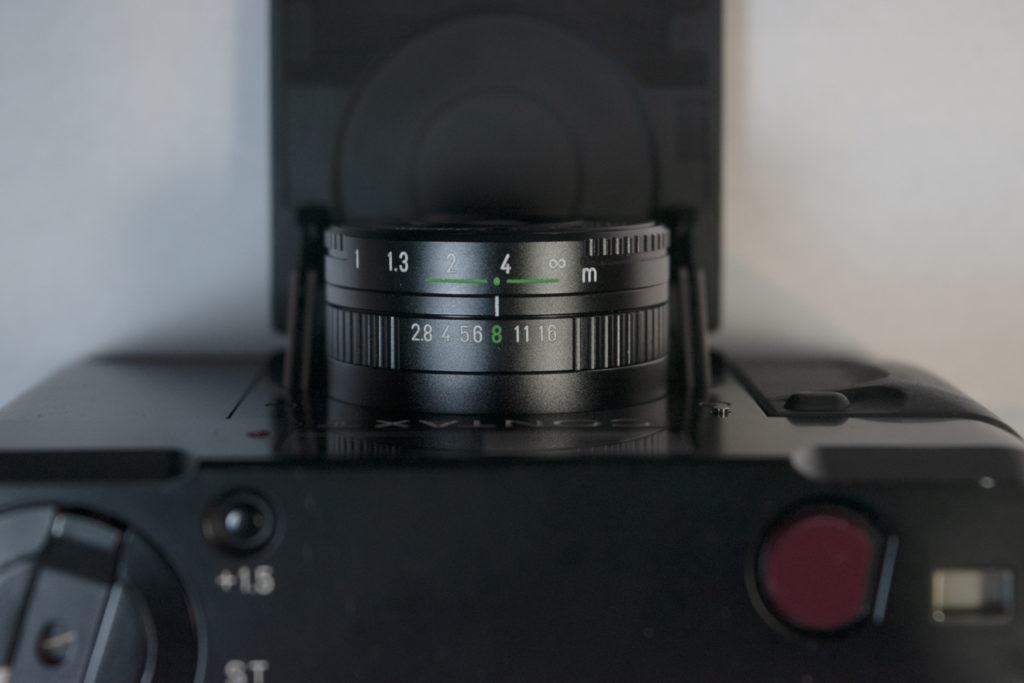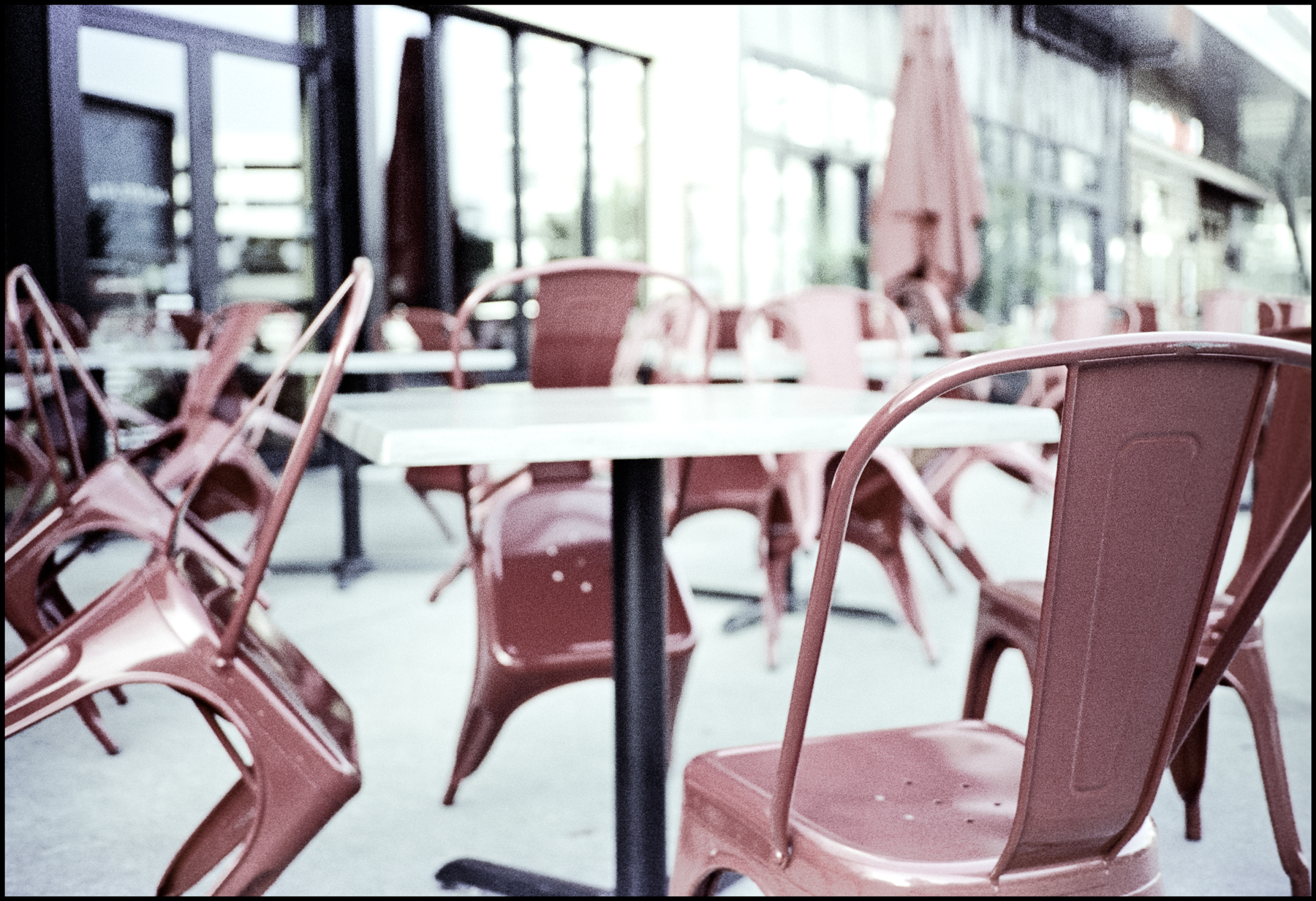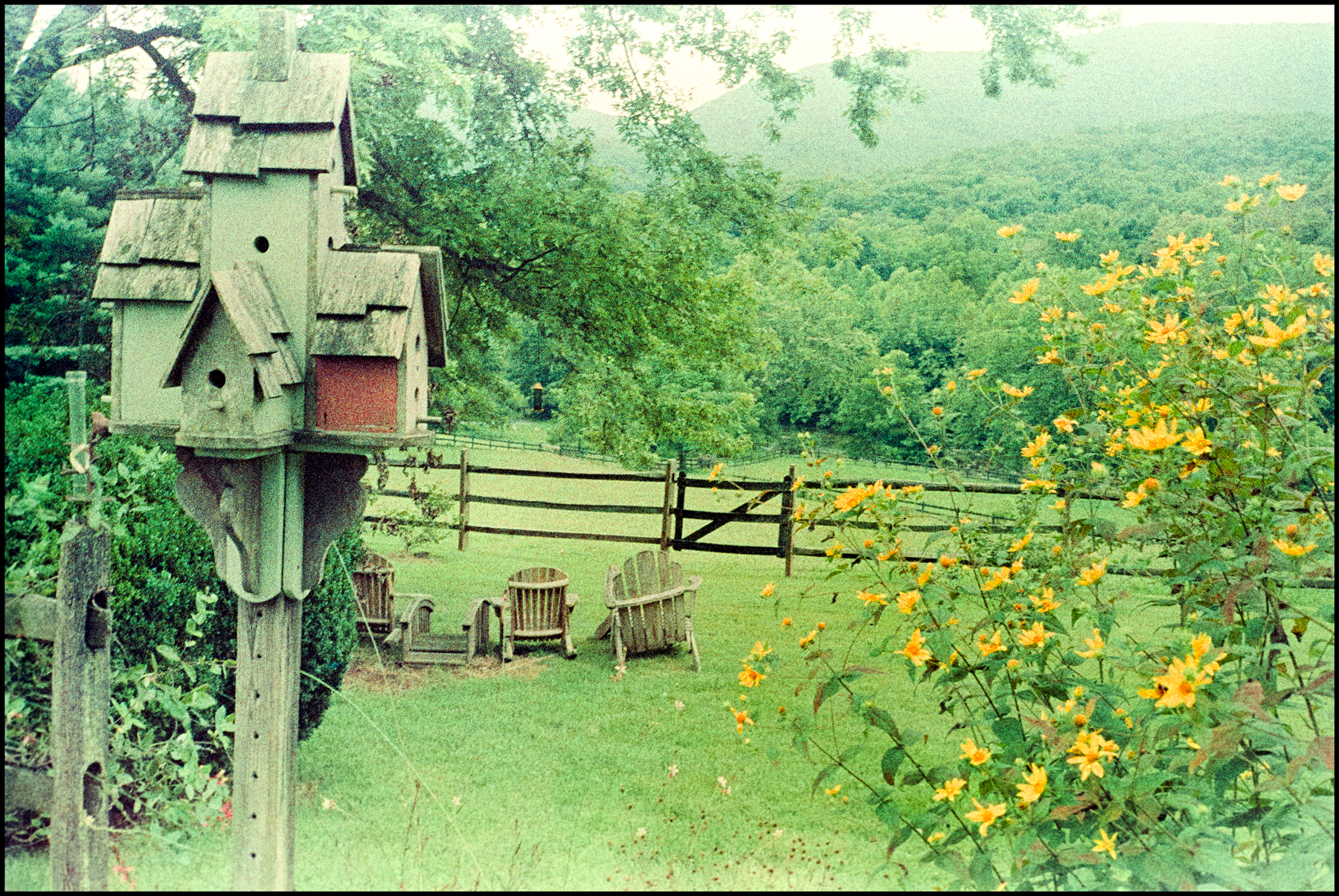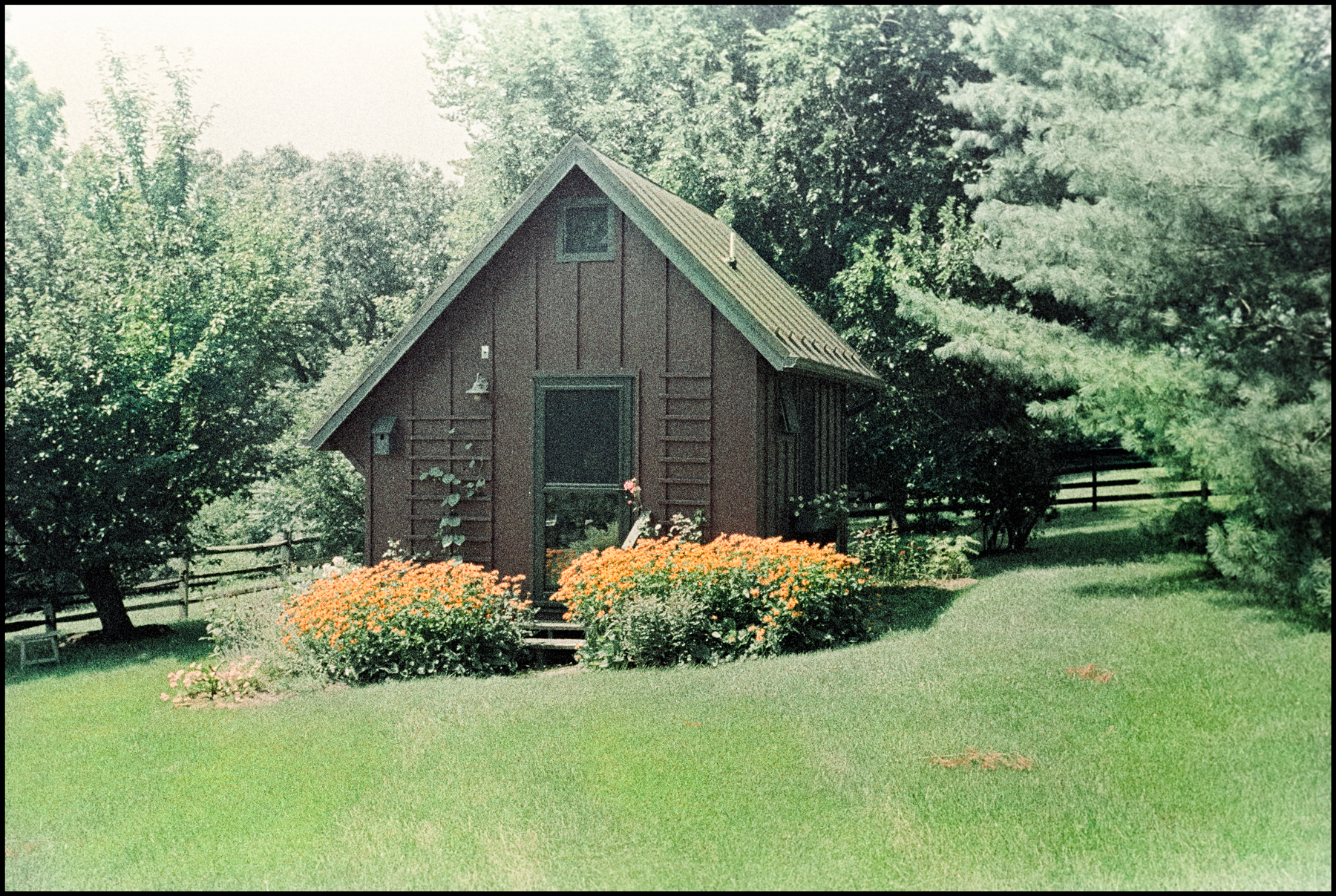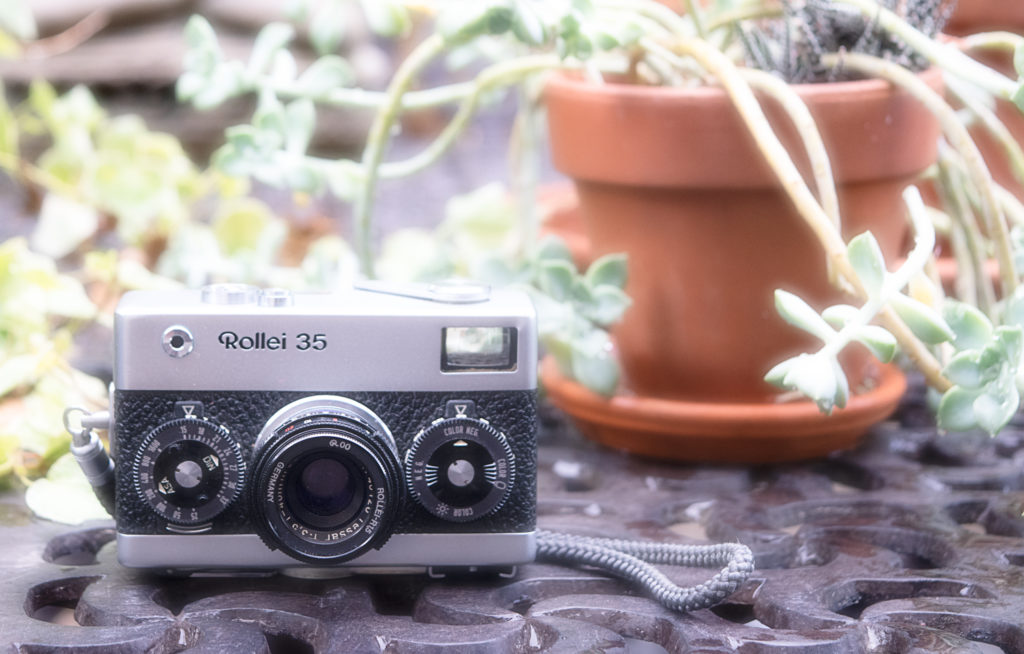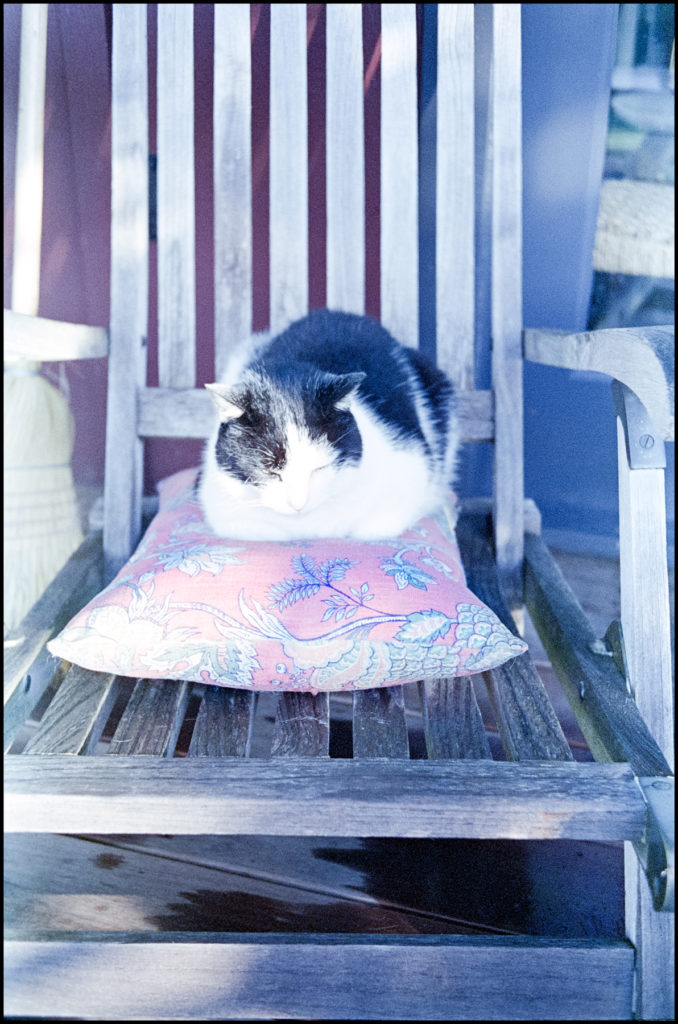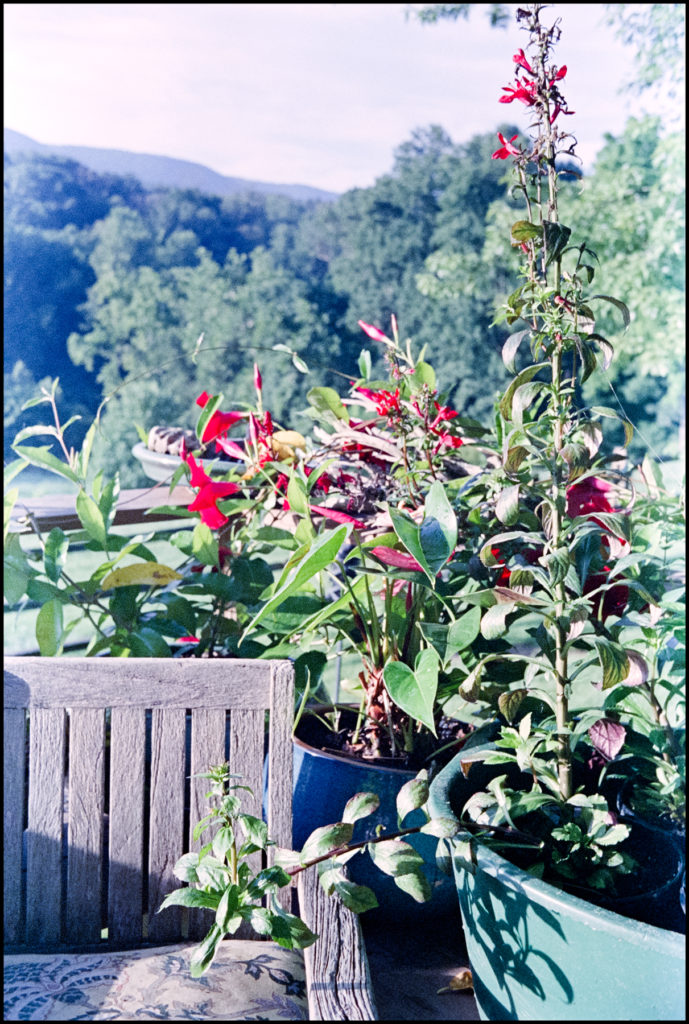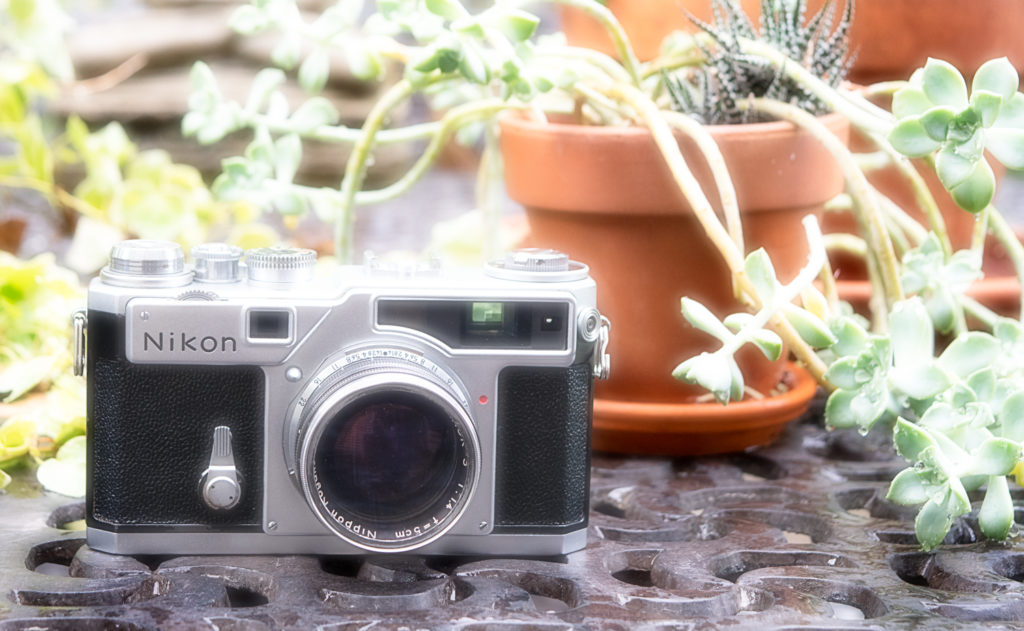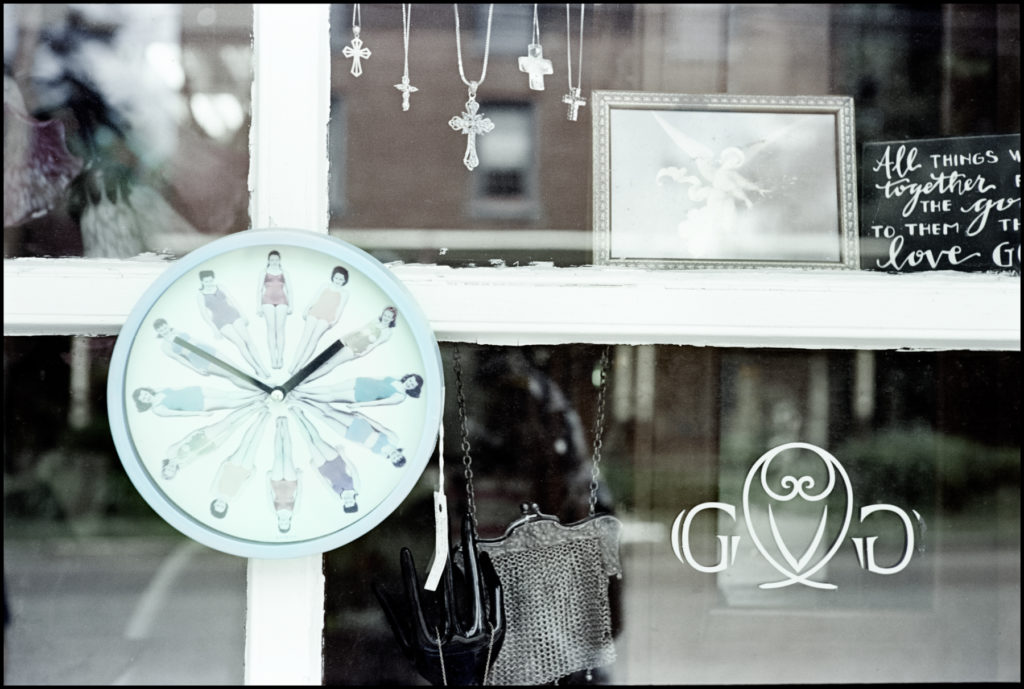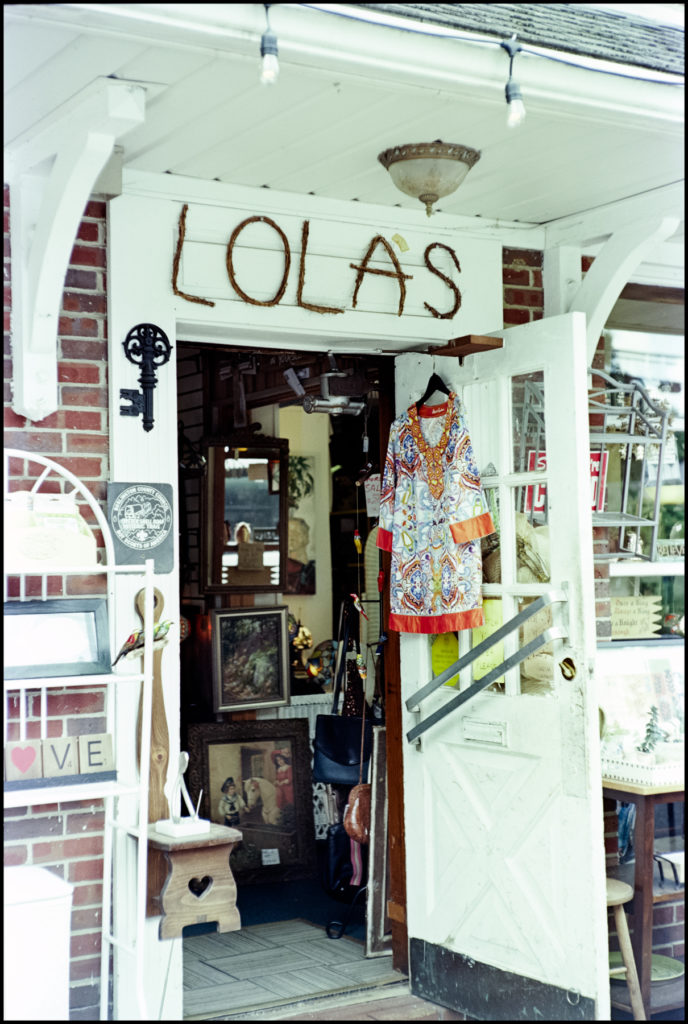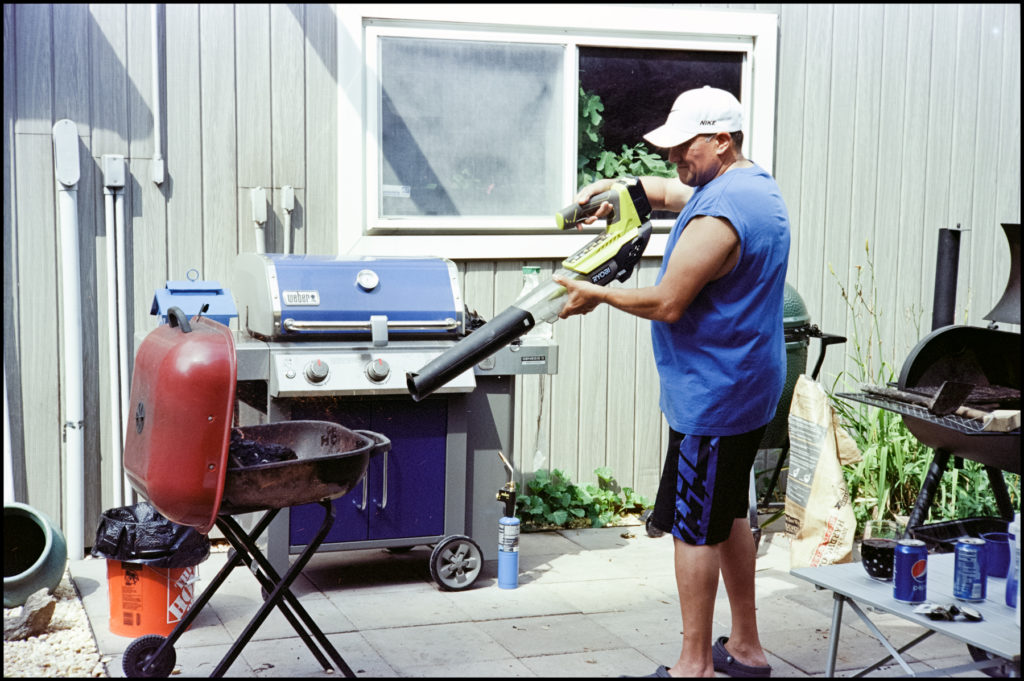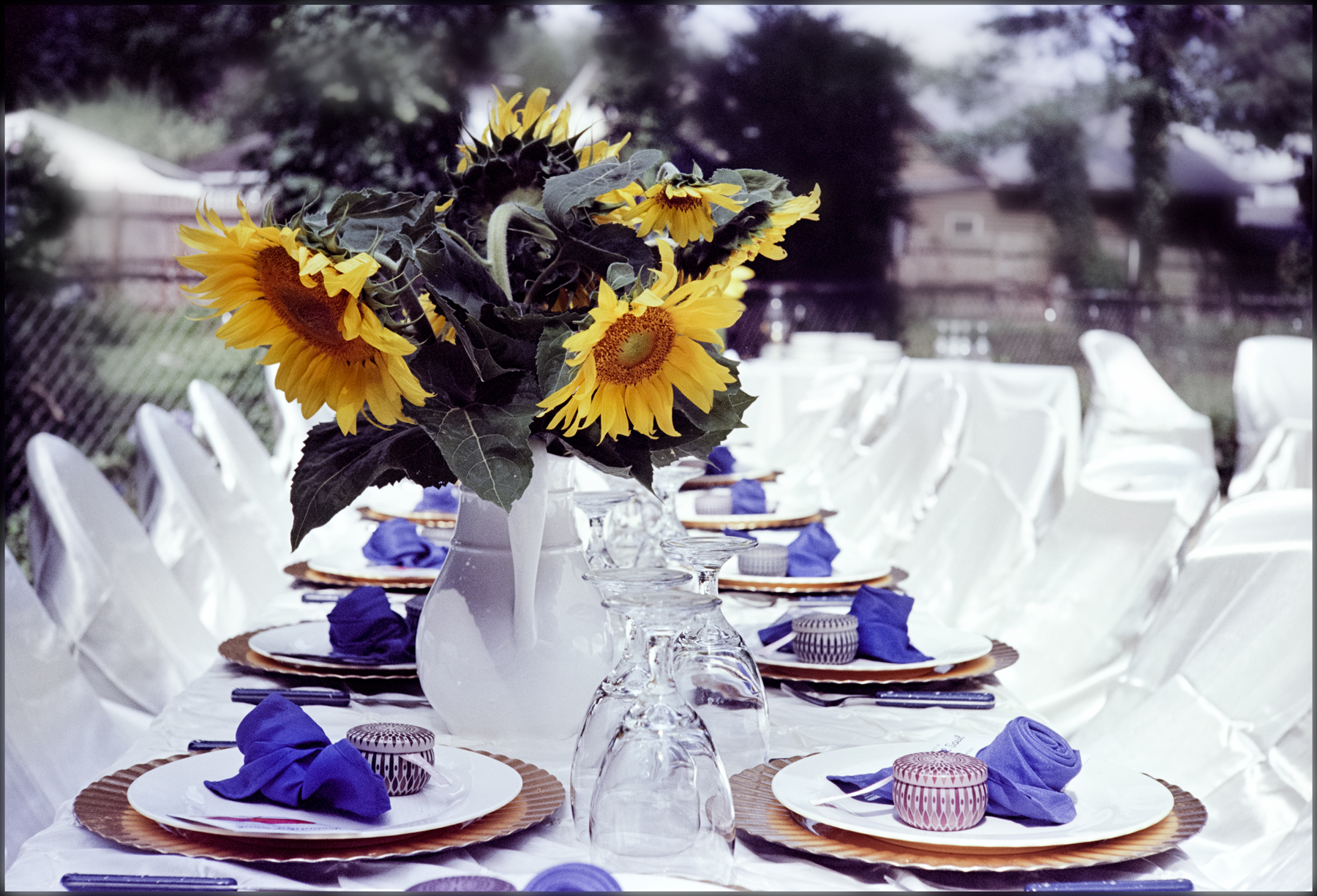Don’t Feel Like Reading? Watch The Video!
Occasionally, I’m moved by the Spirit to add to my collection of cameras and lenses. Usually this happens when I’m browsing yard sales, flea markets, estate sales, or eBay. I keep a running wish list of strategic purchase objectives in a yearly plan. For example, this year, 2022, I listed a Leica Summilux-M 28mm F1.4 ASPH as a strategic acquisition objective, and given the price of this lens, or anything else under the Leica brand, one can easily see why such a purchase would be considered a strategic acquisition.
Two categories of collectables drive my acquisition plan. Category 1 includes items that pique my interest not currently in my collection. Category 2 contains items I already own and like so much I want to own several as backups. Examples from category 1 include the recently acquired Nikon SP and Rollei 35. An example of category 2 is the Contax T. Let’s start with the Contax T.
Contax T — Black Finish
If you spend a little time browsing this site, you’ll soon learn I’m a huge fan of the Contax T, a compact 35mm range finder that fits in the palm of your hand. Well, it fits in the palm of my hand, anyway. I like this camera so much that over the years I’ve acquired four. When I saw this specimen on eBay in pristine condition sporting a low serial number, I pulled the trigger.
It is said the acclaimed French photographer Henri Cartier-Bresson used a Contax T in the later years of his life and owned several. This I have not been able to confirm with any certainty. It is also said that the photographer Constantine Manos used a Contax T at some point. Several months ago, I sent him an email posing this question but received no reply. Who am I, anyway, to bother a Magnum photographer with such drivel?
I should have bought four of these little gems back in the 80’s when they weren’t so bloody expensive. Had I known what retro camera gear would sell for nowadays, I would have bought stuff just to hold onto over the years. That would have been a rather dubious investment, personally, because I tend to acquire things as opposed to letting things go.
The Contax T has an electronically controlled leaf shutter which requires batteries to operate. The shutter operates in Aperture Priority mode, which means you set the desired aperture and the camera sets the shutter speed. Shutter speeds range from 8 seconds to 1/500 of a second. With 400 speed film and higher you must ensure you’re not overexposing when taking shots in bright sunlight. I say this because the way I employ this camera is by setting the aperture to 8 and aligning the hyper-focal distance dot with the 8 as shown in the photograph below. In this way, everything from about 1.7 meters to infinity appears to be in focus. I don’t bother looking through the viewfinder to frame the shot. This is one of the reasons this is my favorite street photography camera. In low light, aperture priority mode yields interesting blurry effects.
Rollei 35
I’ve always wanted a Rollei 35. They just look cool. Cool and compact…that’s the way to roll. I didn’t realize how cool and compact these cameras really were until I acquired my first specimen.
I admit, I know little about the Rollei 35. Some were manufactured in Germany while others were made in Singapore. I don’t know if one is any better than the other, but the one I bought was made in Germany, and you can tell. It’s solid, weighty, well built, and precise. It’s definitely heavier than the Contax T with similar dimensions when the lens is retracted.
The Contax T is designed by Porch. It has sleek, refined lines. The Rollei 35 is not designed by Porch, and it’s obvious. It’s boxy and hard-lined but still pleasant to behold and easy on the eyes. The film advance lever is on the left while the Contax T’s is on the right. That’s a big deal for me because I’m right-handed, at least that’s how I prefer to shoot with the Contax T. It’ll take some getting used to if I want to use the Rollei 35 as a street shooter the same way I employ the Contax T.
Another difference between the Rollei 35 and the Contax T is the film frame counter is on the bottom of the camera. That’s not an issue, really, as I don’t usually care how many shots are left on a roll…I just shoot until it stops, rewind, reload, and continue. The primary difference between the two cameras is the Contax T works solely in Aperture Priority mode, whereas the Rollei 35 is a manual camera with a built-in exposure meter. The exposure meter requires a battery to operate, but the camera can be used manually without the exposure meter if so desired. So, if the battery dies, and you know how to estimate exposures with the Sunny 16 Rule, you’re still in the game. If the battery dies on the Contax T, you’re fucked.
Lens-wise, the Contax T and the Rollei 35 are West Virginia cousins. The Contax T sports a Carl Zeiss Sonnar 38mm f2.8 T* lens, which I know from experience produces incredible images. The Rollei 35 has a Carl Zeiss Tessar 40mm f3.5, but I have no experience with this lens. The Contax T has a slightly wider angle of coverage. Score one for the Contax T. But aside from that, does a Sonnar render better images than a Tessar? I don’t yet know the answer to this question, but I hope to formulate an informed opinion after I develop the film and examine the sample images.
From an ergonomic standpoint, I’m sure my picture taking will slow down with the Rollei 35 since it’s a manual camera. I’m so used to letting the Contax T do its thing, which it does so well. The Rollei 35 will force me to evaluate scene illumination and the camera’s settings each time I take a photograph. This is not necessarily a bad thing, but from a street photography perspective, anytime you must fiddle with the camera you draw attention to yourself and to the machine. People tend to get nervous and don their personas when they sense a camera is pointing in their direction. The Contax T wins in the stealth department.
The Contax T’s Sonnar is slightly faster, but for the type of photography I do with these small, compact cameras, I doubt it will be an issue. I generally shoot with the Contax T’s Sonnar set at f8, so any advantage f2.8 offers in low light goes largely unused. I have more capable cameras and lenses if low light shooting is on the agenda. But perhaps a hint as to how each lens renders an image from an aesthetic point of view lies in their design and the fact that one has a maximum aperture of f2.8 vs. f3.5. Perhaps it’s time I try shooting these cameras mounted on a tripod to get a feel for which lens looks best shot wide-open.
Nikon SP
At first glance, the Nikon SP is one of those cameras that appears cheap and easy but once you hold one in your hands you immediately realize it’s a serious hunk of metal with, at the time it was produced, features demanded by professional photographers. So much for false notions and groundless opinions. The serial number on my specimen indicates it was manufactured sometime around 1960. I might be off but not by much. It’s in immaculate shape for a camera that’s older than I am, which is why I bought it. This particular camera sports a Nikkor-S 5cm f1.4 lens. The camera has built-in frame lines for six focal lengths viewed through one of its two viewfinder windows.
In 2005, Nikon made a limited production run of 2500 units of the Nikon SP Limited Edition model in black finish with a W-Nikkor C 3.5cm f1.8 lens. These cameras are pricy, going for $4,700 and up on eBay.
Like I said earlier, this camera is a serious hunk of metal. It has real heft in the hand and feels rugged and solid, unlike the Voigtlander Bessa L which feels like a plastic tinker toy. It’s not even fair to compare the Nikon SP with the Voigtlander Bessa L as the former is a serious, high-quality, professional-grade camera, and the latter feels cheap all measurable standards.
A better comparison would be made between the Nikon SP and a Leica M3. You may scoff at the mere thought of comparing a 1960s Nikon with a 1960s Leica, but I can say right off the bat that I prefer the film loading experience of the Nikon to the Leica’s any day.
One strike against the Nikon SP is the placement of the shutter release button. I found I had to hunt for the button, which is set back a bit, whereas the Leica M3’s shutter release button is more intuitively and ergonomically located. My index finger just falls on it. The delay in finding the shutter release button on the Nikon SP can result in a lost opportunity. I thought I’d get used to it the more I used the camera, but that wasn’t the case. Still, it’s a first-world problem, and one that doesn’t take away any of the joy of shooting with this camera.
One thing both the Nikon SP and Leica M3s share — price! No one’s giving these cameras away. As I write this, an [Exc++++++] Leica M3 Single Stroke with no lens lists for $1,549.00 USD. A Nikon SP in similar condition lists for $1,399.00. At least it comes with a lens! Used camera prices are generally outta sight, but Leica and Nikon rangefinders demand a premium, especially limited run editions.
In the field, the Nikon SP is a pleasure to use, notwithstanding the shutter release hunting expeditions I go on now and then. I simply lose my bearings when looking through the view finder and focusing with my index finger, then trying to press the shutter button. I eventually figured out it was just a little farther back that what I imagined and soldiered on smartly.
You can read more about the Nikon SP here: https://www.cameraquest.com/nikonsp.htm
Wrap-Up
I’m happy to welcome these amazing new-to-me cameras to my collection.
Do you feel like you’re stuck in a photography rut? Buy an old film camera and run a few rolls through it and see where the experience takes you!
Rick Miller
Falls Church, Virginia
17 July 2022

